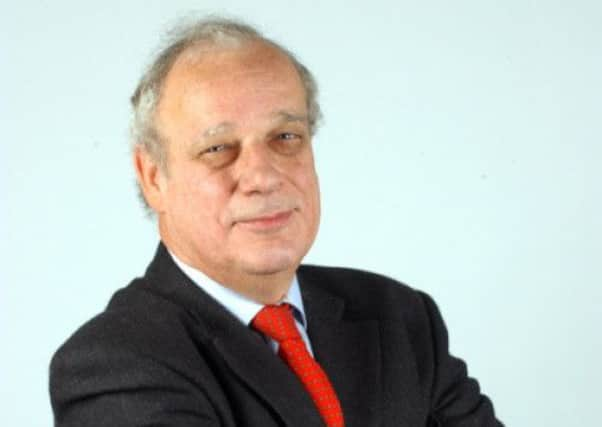Bill Jamieson: What can the MPC find to talk about?


And there’s a particularly heartening piece of good news in Scotland. Before setting this out, I must confess my mood is chirpier at this time than it normally is. For more years than I care to remember, this is the time of the month when I am wrestling to predict the outcome of the meeting of the Bank of England’s Monetary Policy Committee.
The entrails of the economy are pored over, hands are wrung, brows are furrowed. What will the MPC make of it all? Will it raise interest rates or lower them? Thus is uncertainty routinely injected into our financial system.
Advertisement
Hide AdAdvertisement
Hide AdBut no more. Or at least no more at least for now. Thanks to Bank Governor Mark Carney’s “forward guidance”, interest rates are unlikely to move any time soon.
But while the focus has been on our medium-term prospects, little has been said about where all this leaves the existing policy machinery at the Bank and, in particular, the implications for the monthly MPC meetings.
What can it discuss that can credibly be spun out over two days? Two key indicators that it watches – inflation and inflation expectations – are unlikely to give concern given the relative steadiness of sterling and the recent softening of oil prices. That leaves the issue of whether monetary policy may be threatening financial stability, following a veiled warning in the late summer from the Financial Policy Committee. But the FPC last met on 18 September and made no complaint about the MPC’s monetary stance.
So what on earth can fill those long languid hours at the MPC? Is there really a case for continuing with these monthly meetings while forward guidance reigns supreme? Indeed, to allow them to continue creates the impression, unintended I am sure, that the MPC will somehow second-guess the forward guidance policy and in doing so create some ambiguity in markets that the policy for its continuance has to be endorsed by a committee of changing and often sharply opposed economists. This should not stand in the way of those economists giving their views from time to time on monetary policy. But better, surely, a single authoritative voice from the Bank while forward guidance persists than to have a confusing continuation of rate-setting procedure as if the new policy was not in existence.
As Monument Securities economist Stephen Lewis points out: “The challenges that UK monetary policy must now address are more diverse than those it faced 16 years ago. The way in which decisions are actually taken has, to some extent, evolved to meet new requirements. But the framework within which policy is articulated has not changed at all, as the MPC struggles to maintain the fiction that decisions are taken in a collegial spirit.”
For the moment the economy is continuing to enjoy – in the words of Paul Fisher, executive director of markets at the Bank and an MPC member who has previously advocated further asset purchases – an “abrupt resurgence in business and consumer confidence associated with renewed growth”.
The encouraging news in the past week includes the latest service sector Markit and PMI survey showing the strongest quarterly performance since the second quarter of 2007. Within the headline result, the latest uptick in business activity was driven by an increase in incoming new business, with underlying market demand strengthening. And backlogs of work increased at their fastest monthly pace since February 2000.
At the same time, the PMI readings for manufacturing activity in September showed further rapid expansion. The sector has just had its best quarterly performance since the opening quarter of 2011.
Advertisement
Hide AdAdvertisement
Hide AdFor good measure, car sales jumped 12.1 per cent year-on-year in September. The rise in consumer confidence to a 70-month high in September and ongoing improvement in business confidence all help.
And even fiscal trends appear to be improving, with further gains ahead. Last year’s deficit has been revised down by £5.2 billion since the Budget (continuing the bias to favourable deficit revisions) and recent data point to an undershoot of perhaps £10bn or so in this year’s deficit. Next year’s fiscal deficit is set to fall further – at least £10bn – below the OBR’s forecasts as the strong economic recovery boosts revenues.
However, one of the most encouraging pointers north of the Border was the latest update on the economic health of Scotland’s capital. Edinburgh City Council’s monthly economy watch – a useful snapshot barometer other councils should emulate – shows business incorporations in the city in the three months to August were up almost 75 per cent on the same period in 2012. There were also 98 Business Gateway start-ups supported in August 2013, a 10 per cent increase on 2012. So far this year, council support has helped 878 new businesses start up in Edinburgh.
Says Hugh Lightbody, chief officer at the Business Gateway National Unit: “There’s no doubt that businesses are still facing tough economic conditions. But recent research from the Federation of Small Business indicates that Scottish small businesses are at their most confident in three years. This increased confidence, and other positive economic indicators, is encouraging.
“On average, Business Gateway supports around 10,000 start-ups every year and this year looks like business as usual and that, in itself, is a positive and encouraging trend in light of current economic conditions.”
The Scottish Business Confidence Index, produced quarterly by the Scottish Chambers of Commerce, shows the net balance of optimism and pessimism in sectors. There was more optimism than pessimism in opinions of the future for manufacturing and tourism, while business confidence overall improved during the second quarter.
All this is heartening – and with no likelihood in the immediate term of bad news from the MPC, gives hope that the recovery will continue.
Twitter: @Bill_Jamieson